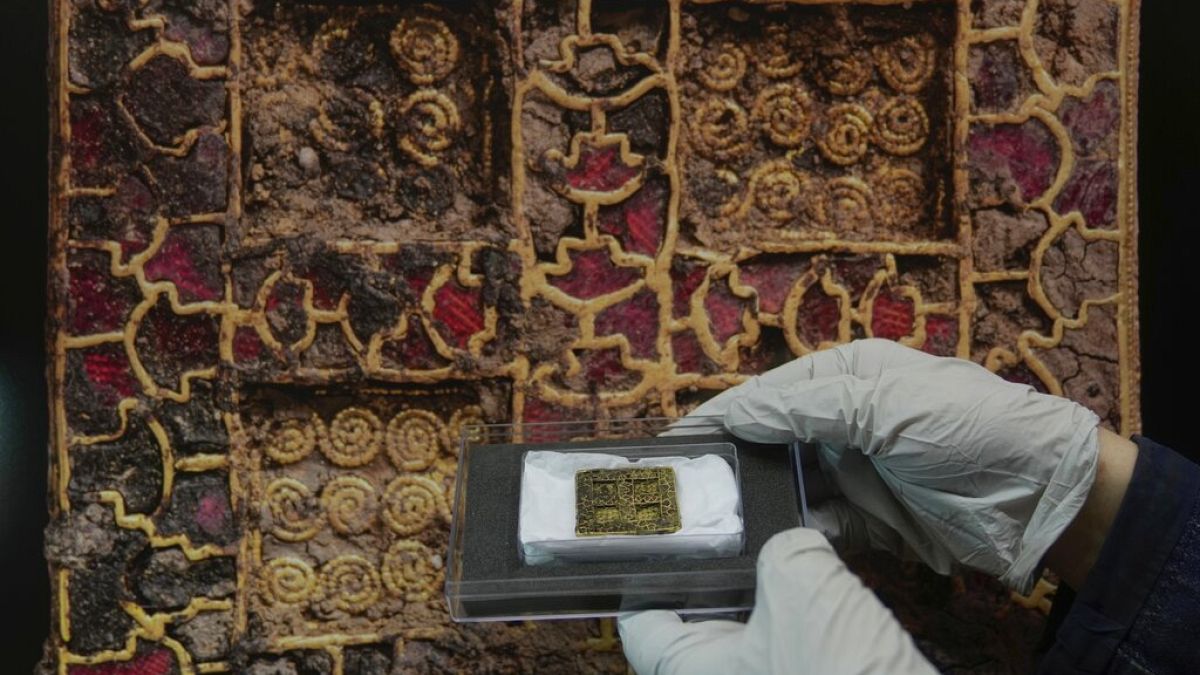Archaeologists say a 1,300-year-old gold and gemstone necklace found during the construction of a housing development marks the grave of a powerful woman who may have been an Anglo-Saxon aristocrat or early Christian religious leader in Britain.
Archaeologists in London have announced the discovery of a 1,300-year-old necklace that sheds new light on life in 7th century England, at a time when Christianity was battling with paganism for people’s allegiance.
Found on the site of a new housing development in Northampton in April, it marked the grave of a powerful woman who may have been an Anglo-Saxon aristocrat or early Christian religious leader in Britain.
The items are “a definite statement of wealth as well as Christian faith,” said Lyn Blackmore, a senior finds specialist at the Museum of London Archaeology, which made the discovery.
“She was extremely devout, but was she a princess? Was she a nun? Was she more than a nun – an abbess? … We don’t know," Blackmore said.
On one of the last days of the 10-week dig, site supervisor Levente-Bence Balázs noticed something glinting in the dirt. It turned out to be a rectangular gold pendant with a cross motif, inlaid with garnets — the centrepiece of a necklace that also contained pendants fashioned from gold Roman coins and ovals of semi-precious stones.
“These artifacts haven’t seen daylight in more than 1,300 years,” Balázs said. “To be the first person to actually see it – it’s just indescribable.”
"This is one thing I chose archaeology for. It is tangible and visible. And now I'm really glad I can share this with the whole world," he added.
The Kingdom of Mercia, where the treasure was found, converted to Christianity in the 7th century.
Within a few decades, as Christianity took hold across England, the practice of burying people with their luxury goods died out.
A large and ornate silver cross was placed on her body in the grave. It is adorned with tiny, astonishingly well-preserved likenesses of human heads with blue glass eyes, who may represent Christ’s apostles.
Clay pots from France or Belgium, containing residue of an unknown liquid, were also found.
The Harpole discoveries - named after the village where it was found, about 96 kilometres northwest of London - will help fill in the gaps in knowledge about the era between the departure of Britain's Roman occupiers in the 5th century and the arrival of Viking raiders almost 400 years later.
Experts say it’s one of the most significant Saxon finds since the 7th-century ship burial found in the 1930s at Sutton Hoo, about 160 kilometres to the east.
Once archaeologists have finished their work, they plan to display the items at a local museum.


